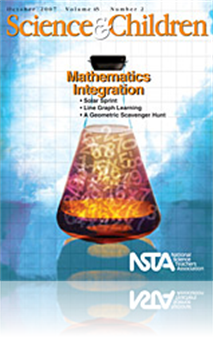All Resources
Journal Article
After the Bell: Strategies for learning and metacognition—Identifying and remembering big ideas
Classification promotes visual discrimination, observation, memory development, organizational skills, and problem-solving ability. The science curriculum depends on the skill of classification for concept building. The activities in this article of...
Journal Article
Getting the Most out of Electrophoresis Units
At Oklahoma City Community College, they have developed gel electrophoresis activities that support active learning of many scientific concepts, including: pH, electrolysis, oxidation reduction, electrical currents, potentials, conductivity, molarity...
Journal Article
A Literature-Circles Approach to Understanding Science as a Human Endeavor
Unfortunately, the reading of science-related, historical nonfiction alone does not necessarily lead students to make personal connections to science or understand science as a human endeavor interdependent with culture, society, and history. Teacher...
Journal Article
Perspectives: Science and Mathematics—A Natural Connection
Nowhere in our daily lives do we separate tasks into specific subjects before we take action. Yet in schools we continue to teach the various disciplines as separate areas of knowledge. What if school, like the real world, could be more connected? Co...
Journal Article
Science Sampler: The Pet Rock Project—Making the rock cycle come alive!
The Pet Rock Project provides students with an in-depth understanding of the rock cycle that involves their artistic and creative abilities in the Earth science classroom. The idea of a pet rock was central to the project as a mechanism to make Earth...
Journal Article
In this article, the learning progress of one fifth-grade student is examined with regard to the development of her graph interpretation skills as she participated in the Junior Science Institute (JSI), a two-week, science intensive summer camp in wh...
Journal Article
Science 101: When drawing graphs from collected data, why don’t you just “connect the dots?”
Using error bars on graphs is a good way to help students see that, within the inherent uncertainty of the measurements due to the instruments used for measurement, the data points do, in fact, lie along the line that represents the linear relation...
Journal Article
Editor’s Corner: It’s a Wonderful Life… Science
In this month’s column, the field editor shares an epiphany he had while finishing up a genetics unit with his high school students—“It’s a wonderful time to be teaching biology.” He discusses the events that led him to this conclusion, and...
Journal Article
Safe Science: Bloodborne Pathogen/OPIM Hazards—Zero Tolerance!
Bloodborne pathogens are microorganisms found in human blood that can infect and cause disease in people who are exposed to blood containing the pathogen. The precise risk of bloodborne pathogen transmission during exposure to open wounds or mucous m...
Journal Article
In this month’s column, the experts address the following question: When you lose 10 pounds, where does it go?...





